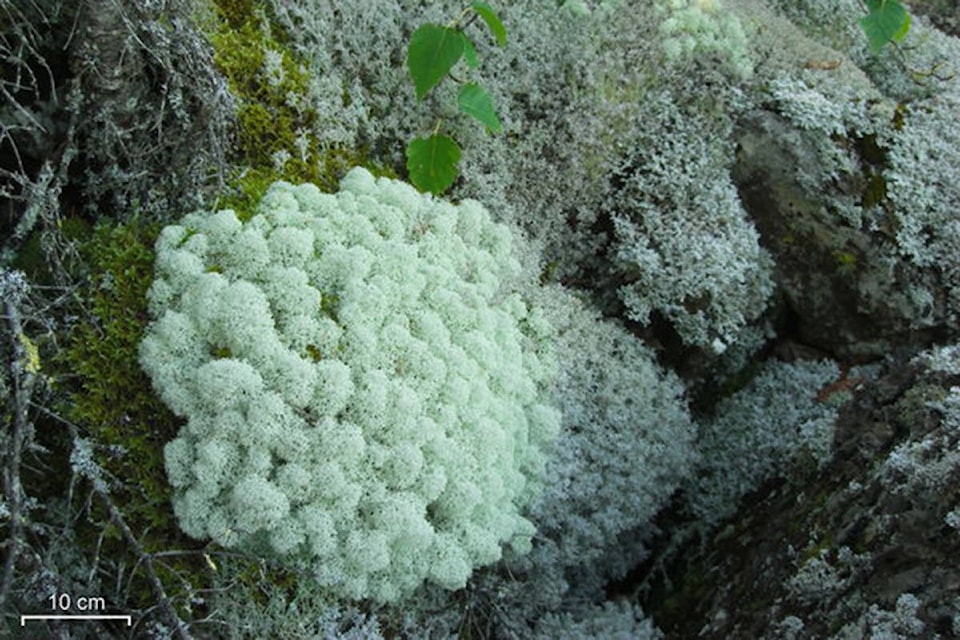The votes are in for Canada’s proposed national lichen and the Star-tipped Reindeer Lichen has taken the top spot.
The contest, which was put together by the Canadian Museum of Nature, also had the help of Upper Clearwater’s Trevor Goward, co-curator of lichens at the University of British Columbia, who was not only on the contest committee, but actually came up with the official common names of the first and third place winners.
The Star-tipped Reindeer (Cladonia stellaris) received 4,814 out of the total 18,075 votes.
Second place went to the Elegant Sunburst Lichen (Xanthoria elegans) with 3,601 votes and third went to the Horsehair Lichen (Bryoria sp.), which came in at 3,365.
“What both of these lichens have in common, horsehair and the (reindeer lichen), is they both are cornerstones of Canada’s most distinctive animal, which is our caribou,” said Goward.
“We have them on every 25 cent piece, it’s kind of non-informal national animal, so both of these lichens are used by caribou in the winter, without which the caribou simply couldn’t survive.”
According to nature.ca, lichens work as biological indicators of air quality, with certain types being considered as “canaries in the coal mine” because they’re sensitive to pollutants in the atmosphere. They’re also among the first colonizers of bare rock and prevent erosion by stabilizing soil. Some even fix atmospheric nitrogen for the soil and offer food, shelter, and camouflage for other animals, and have been used for traditional medicines and dyes.
The website says the star-tipped reindeer lichen makes yellowish-green, rounded, foam-like tufts that spread across thousands of square kilometres of boreal woodland soil from coast to coast to coast, and also extends into regions of southern Canada in certain habitats.
Goward said both of the lichens he named live in old-growth forests and take a century or more to develop.
Goward’s opportunity to name the vegetation came after he’d written a couple of books on lichens and he said he’d figured a long time ago they should have common names to make it easy for non-specialists to understand.
“When I wrote the book Lichens of British Columbia I gave them names, so then there came another book written by a fellow in Ottawa, Irwin Brodo, and some colleagues in 2001 (Lichens of North America) and he adopted about 60 per cent of the names I came up with, so these two names are based on mine,” said Goward.
He added he was gratified to learn that more than 18,000 Canadians voted in the contest, which shows interest across the country, though the results don’t make the winner exactly official.
The next step is to get recognition from the federal government because the result has to be proposed to various governmental agencies and go through certain protocols for the decision to be made.
He said the people have spoken, however, and he doesn’t see why the Canadian government would disagree.
“I think a lot has been sidelined because of the coronavirus, but we’ll have a huddle at some point and talk about the next step forward, but for now that’s where it is,” he said.
newsroom@clearwatertimes.com
Like us on Facebook and follow us on Twitter
